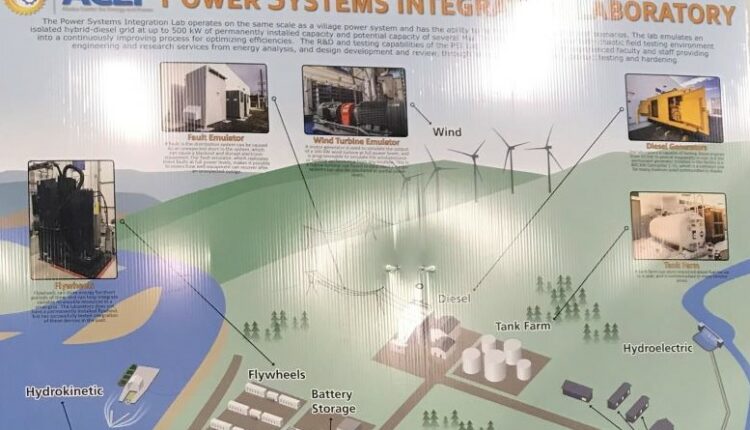
Site Visit: Advocacy Hears Unique Energy Challenges at Alaska Energy and Power
By Prianka Sharma, Assistant Chief Counsel
While on a recent regulatory reform trip, Advocacy staff visited the Alaska Center for Energy and Power in Fairbanks. The visit gave Advocacy the opportunity to learn about the unique energy challenges Alaskans face. The center is operated by the University of Alaska despite being its own institute. The center’s goals include improving the reliability of power in small communities and lowering the cost of producing the power.
Under the Regulatory Flexibility Act, small municipalities of 50,000 or less in population are considered small entities. Alaska is home to several remote communities that qualify under this definition. Many of these communities rely on diesel fuel flown into the region for their power. The center is working to find more cost-effective solutions including wind power in coastal communities and hydrokinetics in communities with large running rivers.
The center offers simulators for startup companies to test their products in the worst-case scenarios that the products might see in the field. One recurring issue center staff see is products from companies outside Alaska that do not account for the uniqueness of the Alaskan climate in their design. Products need to be “Artic packaged,” meaning that they can withstand the extremes of Alaska’s harsh winters and its dry and hot summers.
When companies do not take this into consideration, their products fail. Multiple failed projects have caused distrust in rural communities, and companies litter the rural landscape when the installations are not properly removed.
With respect to renewables, center staff stated that because the state government subsidizes power for the electric cooperatives, many of whom still use diesel, the benefits would go to the state, rather than the communities themselves, if they were to switch to more efficient forms of energy. Therefore, these small entities have no financial incentive to switch to renewables.
Perhaps the biggest issue mentioned however, was that U.S. standards developed for small microgrids in the contiguous United States are simply unworkable for Alaska. The center suggested that federal agencies develop Alaska-specific standards. They suggested using tiered levels of standards based on grid dynamics of different sizes. Because of the current standards, equipment that is used in the contiguous United States does not function on Alaskan microgrids and causes daily outages.
Finally the center mentioned that larger companies are usurping co-ops in Alaska because the costs for maintenance and repairs to existing infrastructure are too high for rural co-ops. There is no watchdog to ensure that rural co-ops are not victimized by greedy corporations looking to make sales.
The theme of federal agencies issuing regulations and standards that apply to the lower 48—and not to Alaska’s specific, unique needs—was repeated in almost every one of Advocacy’s visits in the state. Chief among these concerns for the center was regulating smarter and creating standards that actually work in the state.
Advocacy was in Alaska for Regional Regulatory Reform Roundtables July 9-11.
Can’t get to a roundtable near you? Fill out this form and tell us about your federal regulatory burdens. We will pass this information on to the appropriate agency and use it in the planning of upcoming Regional Regulatory Reform Roundtables.
For more information on Advocacy’s mission, our regulatory reform efforts or to find out where the next Regional Regulatory Reform Roundtables will be held, please visit: https://advocacy.sba.gov/regulation/regulatory-reform/.
Prianka Sharma is an Assistant Chief Counsel for Advocacy whose portfolio includes agriculture, energy, and natural resources. Sharma can be reached at Prianka.sharma@sba.gov.
